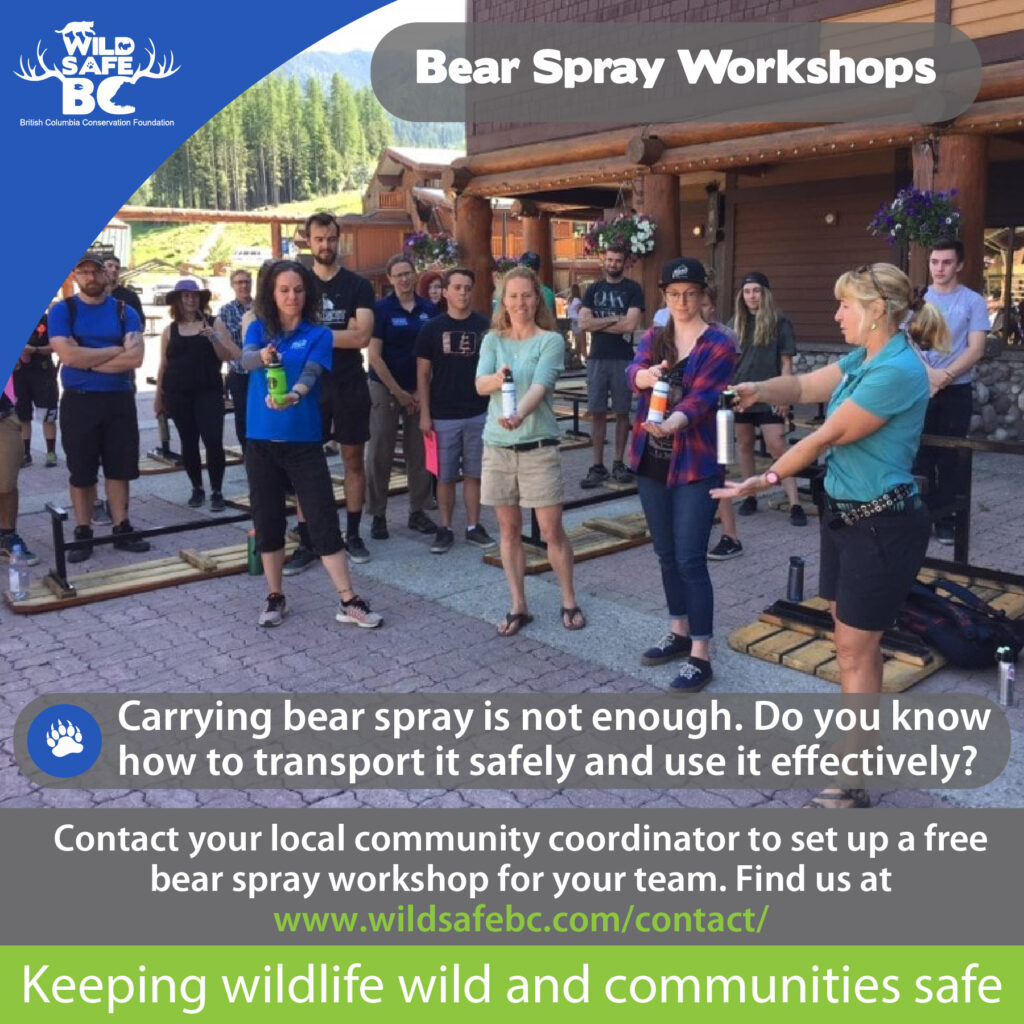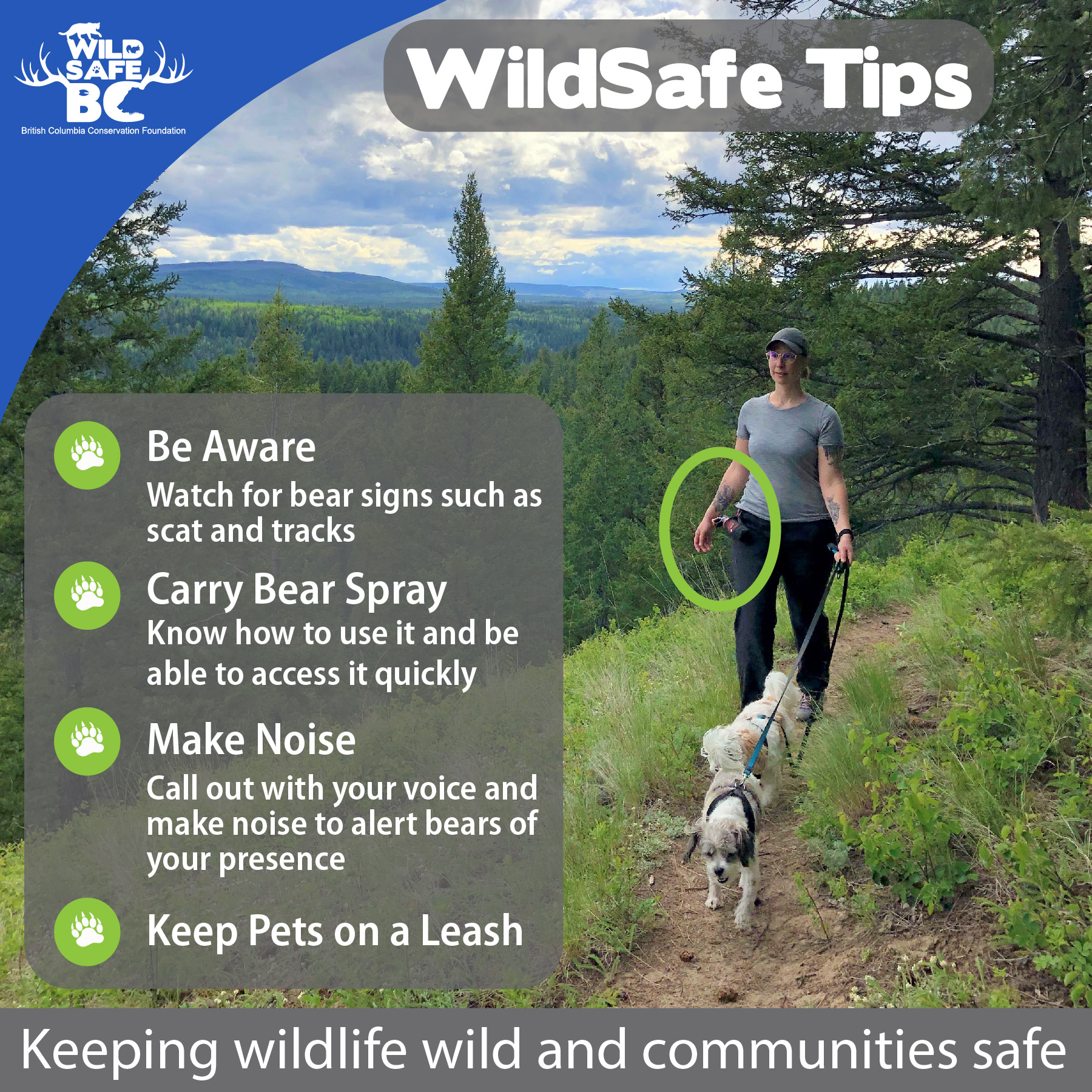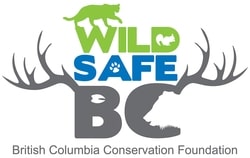Bear Spray
5 Things You Need to Know
1. Bear spray is effective at reducing the risk of injury or death in the case of a bear/predator attack.
2. Carry bear spray where it is easily accessible and be ready to deploy it in less than 2 seconds.
3. Use an approved bear spray (225 ml – 500 ml) and check the expiry date. The propellant in bear spray cans lose its potency over time.
4. Learn how to use bear spray. Watch our short S.P.R.A.Y. video.
5. Know before you go. Learn about what wildlife you encounter and how to react if you do.
What is Bear Spray?
Bear spray contains capsaicin and other related capsaicinoids in a percentage of 1-2%. Capsaicin is found in chili peppers and can be very irritating if it comes in contact with skin, eyes or inhaled. Bear spray comes in a canister with a propellant that provides the necessary pressure to deploy the spray. To be legal in Canada, bear spray must be clearly labelled as such. Bear spray is regulated by Health Canada and Pest Control Products Act. Read the label and precautions carefully.
As the bear spray canister is under pressure, it is important to transport it safely and not leave it in a hot vehicle. For more in depth information on how to transport bear spray safely and when to deploy it, click here. Bear spray comes with a tie wrap installed for safe transport that must be removed before heading out. Practice removing the safety clip. A charging bear can cover 13 metres in a second.
Once discharged, the smell of bear spray may attract animals. To responsibly dispose of bear spray, empty the contents in a place away from people. Once the can is empty, contact your local solid waste management company or Recycle BC at 1-800-667-4321 to find responsible disposal options in your region. Bear spray is considered hazardous waste - do not put it in the recycling.
Avoiding an Encounter
The best encounter with a grizzly bear, black bear, wolf, coyote or cougar is the one you can avoid. Make noise, preferably with your voice, and watch for fresh signs such as scat. Before visiting a provincial or federal park, visit their websites to learn about active wildlife in the area. Learn more about species you might encounter by visiting our species pages.
You can learn more about bear behaviour and defensive versus aggressive bear attacks, by watching the “Staying Safe in Bear Country” video , reading “How You Can Stay Safe In Bear Country” by BC Parks and referring to our black bear and grizzly bear pages. Always keep pets leashed when there is potential to encounter wildlife. Predators may see your pet as a potential threat or prey.


Wildlife Encounters
If you do encounter a predator, you may only have a few seconds to react. Remember the S.P.R.A.Y. acronym.
S – Stop
Stay CALM and DO NOT RUN. Assess the situation.
P – Prepare
Remove the bear spray from the holster with your dominant hand and grasp the base with your other hand. Observe the animal. If the animal does not appear interested in you, back away slowly, always facing the animal. If the animal approaches or follows – stop.
R – Remove the safety
With the bear spray in both hands, release the safety.
A – Build A Wall
If the predator charges you, build a wall of spray between you and the predator. Do this by pointing the bear spray to the ground a few meters in front of you, press on the trigger and bring the spray up in line with the predator’s head.
Y – Yield
Take a step back to put distance between you and the cloud of spray and the predator.
Things to Consider
Bear spray has been determined to be an effective deterrent that can reduce injury and potentially save your life. Like a seat belt, it should be considered essential safety equipment when travelling in wildlife country.
Hunters may be at increased risk of a bear attack since they are intentionally moving quietly and are more likely to surprise a bear. Bear spray has been found to be easier, faster, safer, and more effective than a firearm at preventing injury and death.
Mountain bikers in bear country should carry bear spray on a holster on their body and not their bike. Mountain bikers moving at a high rate of speed can potentially surprise bears on paths where sightlines are poor. Bears may be attracted to paths where berry-producing shrubs thrive.
While trail running, avoid using headphones, be vigilant and make noise by occasionally calling out and clapping your hands. Be cautious when travelling downwind or near moving water. If animals cannot smell or hear you, they may be surprised and this can lead to a defensive attack. Hike with a partner or in a group whenever possible.


